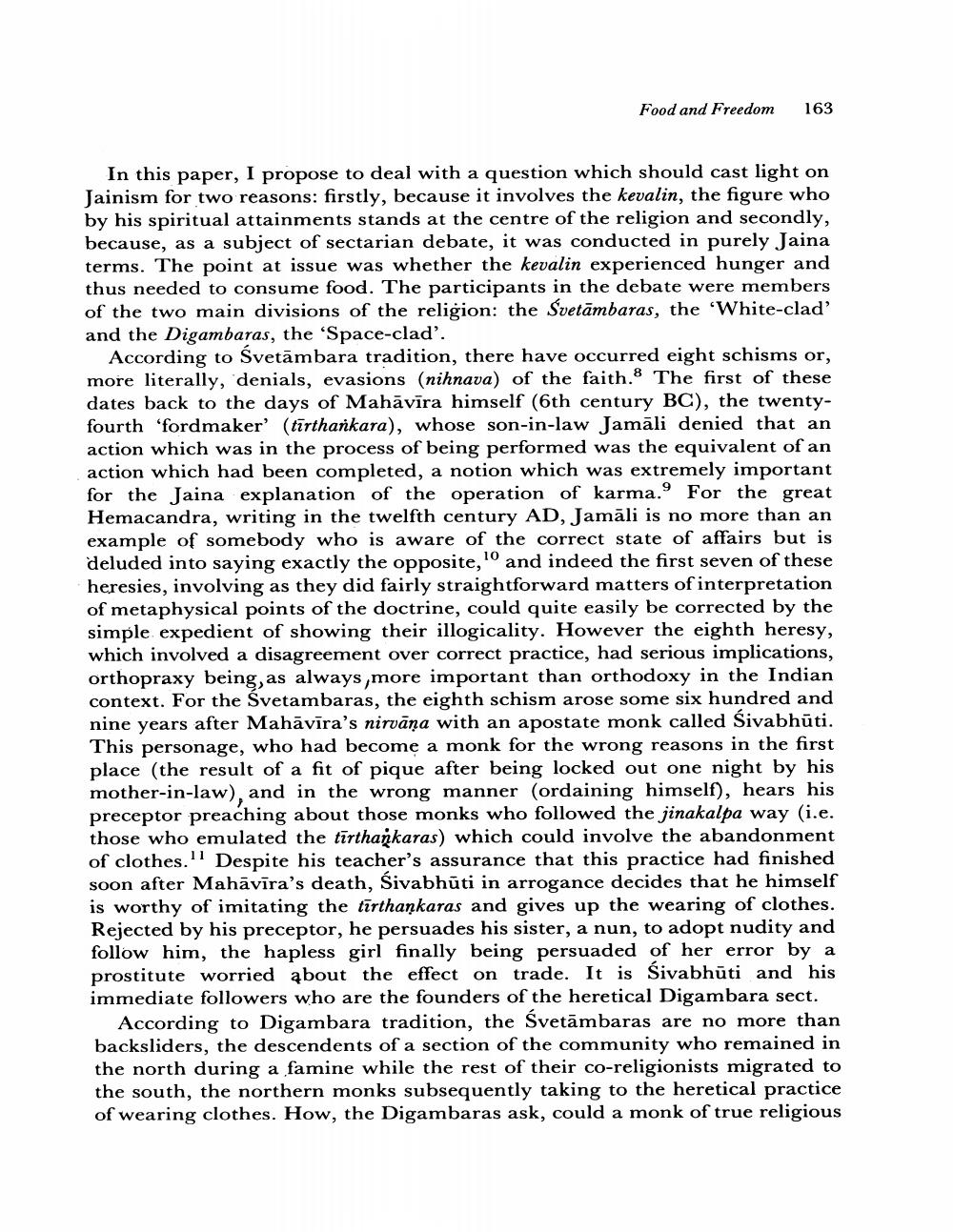Book Title: Food And Freedom Author(s): Paul Dundas Publisher: Paul Dundas View full book textPage 3
________________ Food and Freedom 163 In this paper, I propose to deal with a question which should cast light on Jainism for two reasons: firstly, because it involves the kevalin, the figure who by his spiritual attainments stands at the centre of the religion and secondly, because, as a subject of sectarian debate, it was conducted in purely Jaina terms. The point at issue was whether the kevalin experienced hunger and thus needed to consume food. The participants in the debate were members of the two main divisions of the religion: the Svetambaras, the 'White-clad and the Digambaras, the 'Space-clad'. According to Svetämbara tradition, there have occurred eight schisms or, more literally, denials, evasions (nihnava) of the faith. The first of these dates back to the days of Mahavira himself (6th century BC), the twentyfourth 'fordmaker' (firthankara), whose son-in-law Jamali denied that an action which was in the process of being performed was the equivalent of an action which had been completed, a notion which was extremely important for the Jaina explanation of the operation of karma." For the great Hemacandra, writing in the twelfth century AD, Jamali is no more than an example of somebody who is aware of the correct state of affairs but is deluded into saying exactly the opposite, 10 and indeed the first seven of these heresies, involving as they did fairly straightforward matters of interpretation of metaphysical points of the doctrine, could quite easily be corrected by the simple expedient of showing their illogicality. However the eighth heresy, which involved a disagreement over correct practice, had serious implications, orthopraxy being, as always,more important than orthodoxy in the Indian context. For the Svetambaras, the eighth schism arose some six hundred and nine years after Mahāvīra's nirvana with an apostate monk called Sivabhuti. This personage, who had become a monk for the wrong reasons in the first place (the result of a fit of pique after being locked out one night by his. mother-in-law), and in the wrong manner (ordaining himself), hears his preceptor preaching about those monks who followed the jinakalpa way (i.e. those who emulated the tirthankaras) which could involve the abandonment of clothes. Despite his teacher's assurance that this practice had finished soon after Mahāvīra's death, Śivabhūti in arrogance decides that he himself is worthy of imitating the firthankaras and gives up the wearing of clothes. Rejected by his preceptor, he persuades his sister, a nun, to adopt nudity and follow him, the hapless girl finally being persuaded of her error by a prostitute worried about the effect on trade. It is Sivabhūti and his immediate followers who are the founders of the heretical Digambara sect. According to Digambara tradition, the Svetämbaras are no more than. backsliders, the descendents of a section of the community who remained in the north during a famine while the rest of their co-religionists migrated to the south, the northern monks subsequently taking to the heretical practice of wearing clothes. How, the Digambaras ask, could a monk of true religiousPage Navigation
1 2 3 4 5 6 7 8 9 10 11 12 13 14 15 16 17 18 19 20 21 22 23 24 25 26 27 28 29 30 31 32 ... 37
